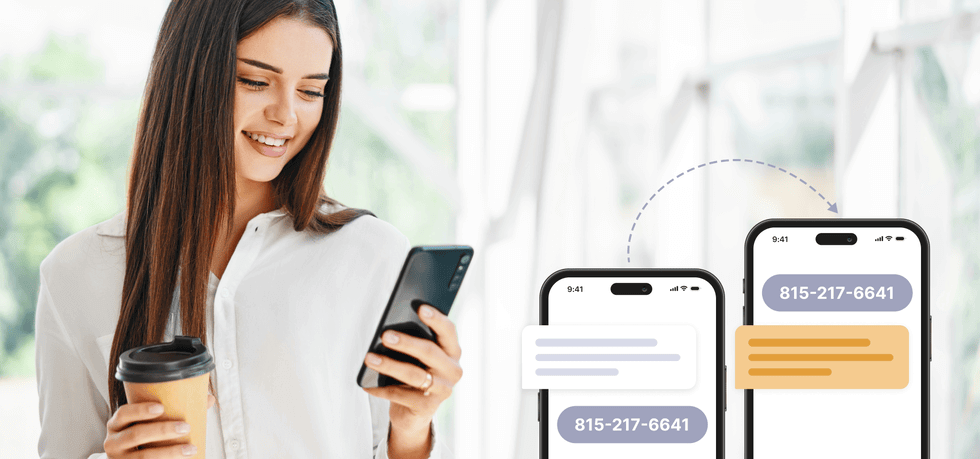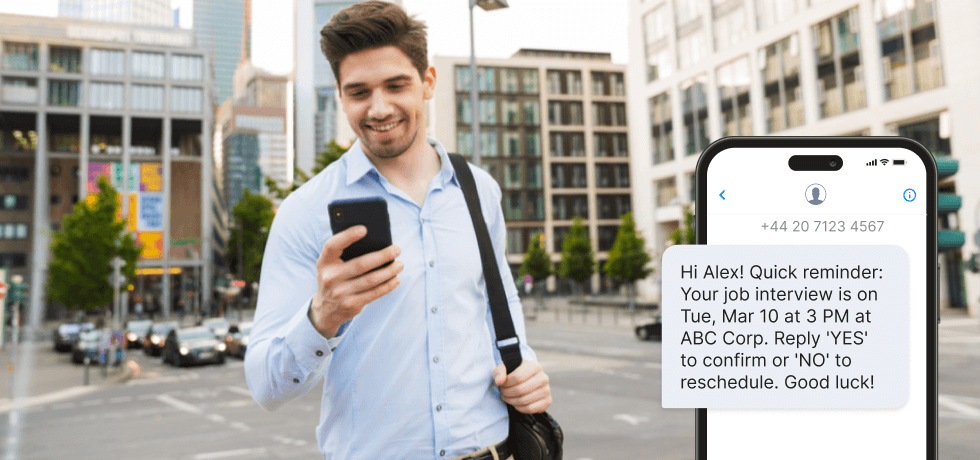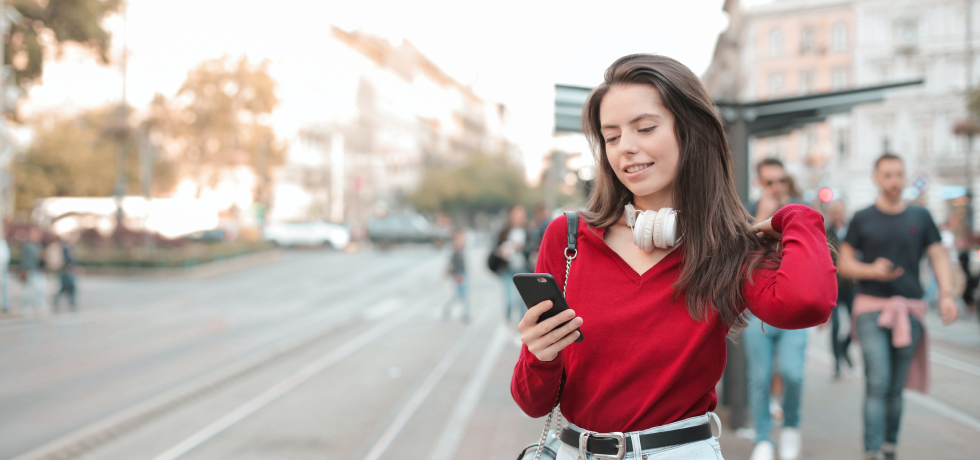
Geofencing is one of the latest technological advancements in business and marketing. Companies small and large adopt it to promote location-based marketing and targeted customer outreach.
Now, although this sounds like a huge advantage, geofencing offers much more. However, to maximize its effectiveness in your business marketing strategy, you must know what geofencing is and how SMS geofencing works.
What is SMS geofencing?
Geofencing is a location-based service that lets businesses access and use the location of their SMS subscribers. It’s similar to creating a “virtual fence” around a specific location to trigger a predetermined response.
In simpler terms, SMS geofencing is a concept that allows you to interact with customers within a specific location via SMS messages. So, once your customer enters your geofence, they receive targeted campaigns from your business.
Now, before you can set up a geofencing strategy, you must have customers subscribed to your campaign. And without the customer’s permission, you can’t send geofencing SMS campaigns to them.
How SMS geofencing works
The process of SMS Geofencing begins when you ask the customer for permission to send them campaigns. Most companies believe this to be the hard part, however, it’s easy to do, especially when you use a mobile opt-in.
Essentially, a mobile opt-in is a request the customer grants, enabling them to share their private details with you. Once they permit you to send them campaigns, you can also obtain permission to use their location.
The working principle of SMS geofencing is for you to reach clients within a stipulated area. So, with access to your clients’ location, you can send them promotions and targeted campaigns once they enter your geofence.
Geofencing demands that you look up your client’s location occasionally to know whether or not they are within your geofence. But the thing is, since it’s a location-based service, it costs money. As such, it is best to only look up clients’ locations once or twice daily.
Here’s an example of how SMS geofencing works: Jennifer visits Skoopd, a small ice cream business close to her workplace, every day after work. One day, she receives an opt-in from their website requesting access to her location, and she accepts it.
Now, whenever she walks past the shop, she gets a message saying: Hi Jennifer! Grabbed your daily serotonin boost yet? Stop by and enjoy 10% off our banana ice cream only for today!
The example above shows how SMS geofencing works and how businesses can apply it to attract customers and boat sales.
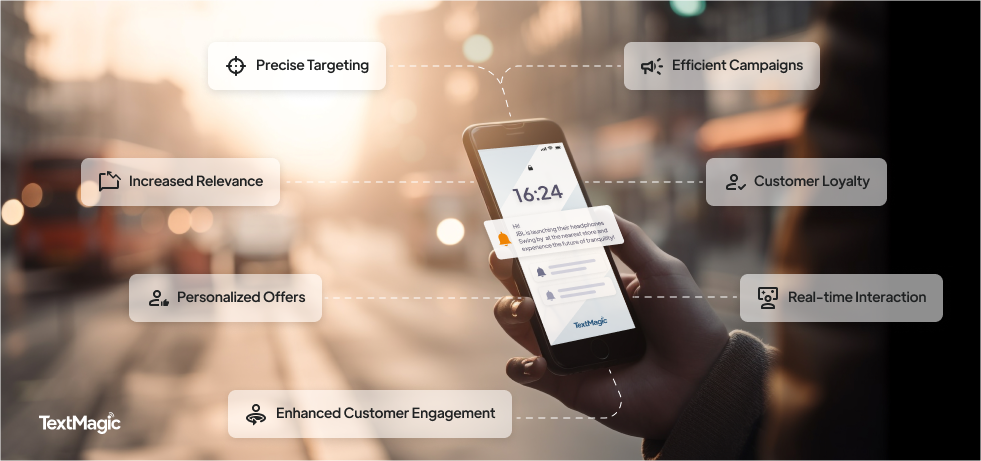
Benefits of geofencing in business marketing
Geofencing technology has revolutionized how businesses engage with their customers. By integrating location-based technology into marketing strategies, companies can deliver precisely targeted messages to the right audience at the right moment. Let’s explore the numerous advantages that geofencing offers in the world of business and marketing:
-
Focused marketing campaigns: Geofencing enables businesses to create highly precise marketing campaigns. They can engage users when they are most in need of a product or service, increasing the chances of conversions.
-
Cost-efficiency: Geofencing significantly reduces marketing expenses. Instead of casting a wide net, it focuses efforts on specific locations where the target audience is present. This not only saves costs but also ensures a better return on investment (ROI).
-
Enhanced marketing effectiveness: Location-based marketing is exceptionally effective at grabbing customers’ attention. Through techniques like coupons, discount alerts, and online promotions, geofencing can entice potential customers to take action.
-
Building customer relationships: SMS geofencing, in particular, allows businesses to send personalized messages. By understanding customer preferences and tailoring offers accordingly, companies can enhance customer loyalty and satisfaction.
-
Data collection and analysis: Geofencing provides a wealth of data about customer behavior and location. This data can be analyzed to gain insights into customer habits, allowing for more effective marketing strategies in the future.
-
Increased sales and event turnout: Ultimately, SMS geofencing can lead to higher sales and greater event attendance. By efficiently reaching the target audience at the right place and time, businesses can significantly boost their chances of success.
Use cases of SMS geofencing
Factually, not many businesses have fully harnessed the possibilities that come with SMS geofencing. However, businesses recognize its potential and have begun incorporating SMS geofencing in their marketing.
Here are a few scenarios where businesses in various sectors have applied the concept of geofencing:
Retail and e-commerce
Industry giants like Starbucks and Dunkin’ Donuts have harnessed geofencing to drive customer engagement and sales. They send personalized notifications to customers as they approach nearby branches, offering tailored messages, special deals, and loyalty rewards.
This real-time engagement encourages customer loyalty, increases foot traffic, and provides valuable data for refining marketing strategies. Geofencing enables these businesses to create seamless, location-based experiences that influence purchase decisions and boost customer satisfaction.
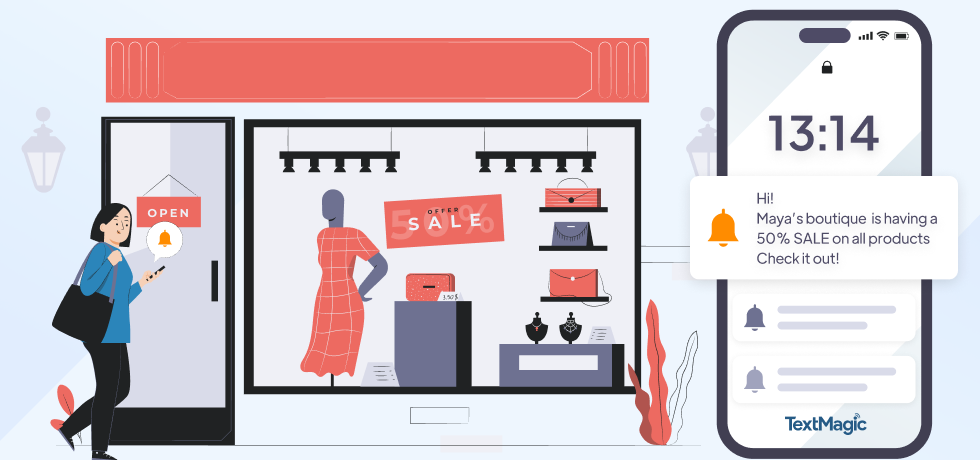
Hospitality
Within the hospitality industry, companies like HotelTonight employ SMS geofencing to draw in prospective clients. This technology serves as a means to promptly notify potential guests about available hospitality services.
What is more, it serves as a dynamic avenue for highlighting ongoing promotions and special offers, creating a compelling incentive for individuals to explore what the establishment has to offer.
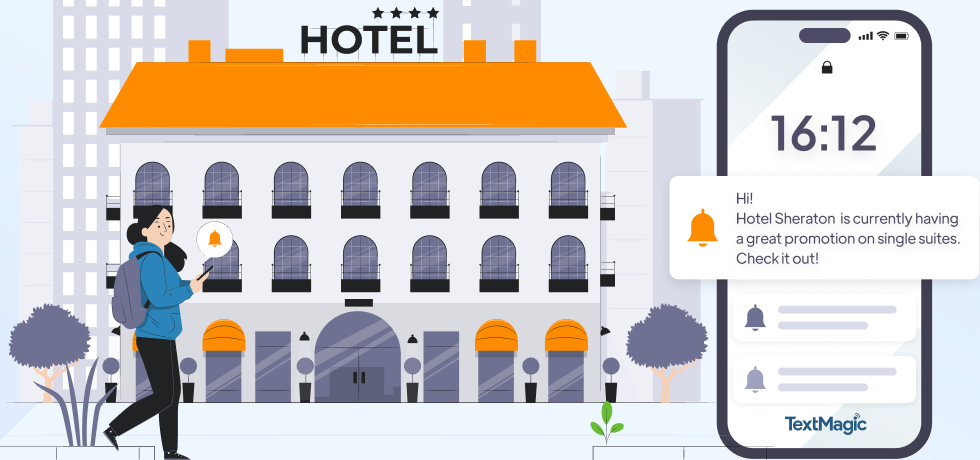
Healthcare
In the healthcare sector, forward-thinking organizations like John Hopkins All Children’s Hospital leverage geofencing to engage with patients and potential clients. This technology allows healthcare providers to establish virtual boundaries around clinics, hospitals, or healthcare events.
When individuals enter these geofenced areas, they receive targeted messages, providing valuable information about available healthcare services, wellness programs, and appointment reminders. This way, healthcare institutions can not only improve patient engagement but also ensure timely access to critical healthcare resources.
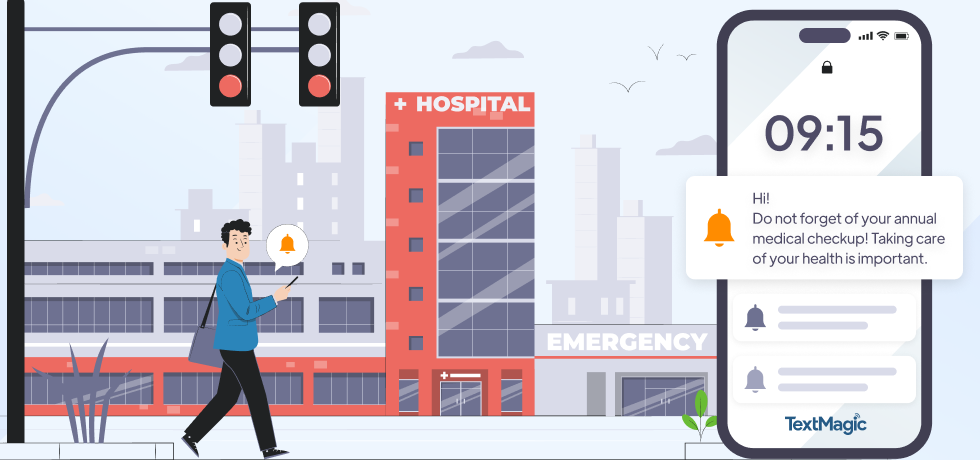
Marketing
Geofencing makes marketing your products and brand easier and more effective. With this strategy, you can raise awareness for your business and see the results quickly since targeted customers are within the company’s vicinity.
For instance, Uber employs geofencing technology to establish virtual boundaries around locations such as airports, hotels, and nightclubs. When customers enter these geofenced areas, they receive notifications indicating the availability of Uber services, making their transportation arrangements more convenient.
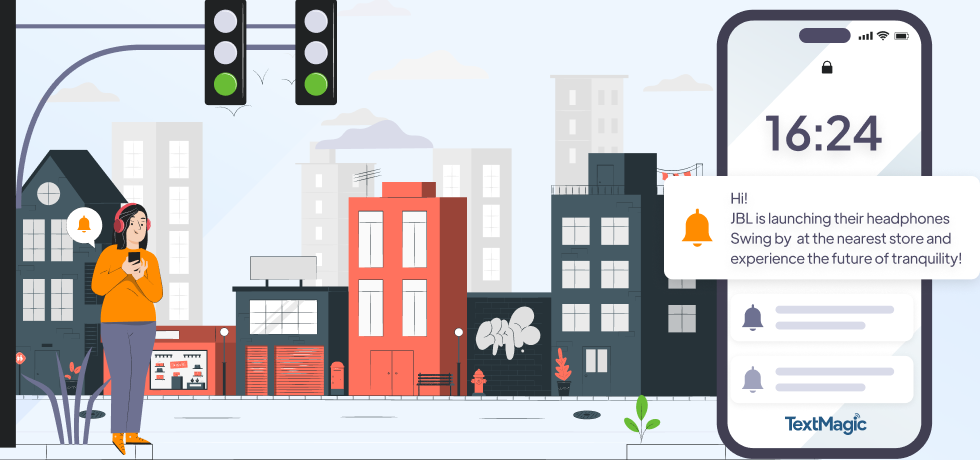
Events and conferences
SMS geofencing is also applicable in events and conferences to focus on people using a specific app relevant to your business. You could apply this to engage people at an event or share your offers with them.
This technology allows companies to create virtual perimeters around the event locations, sending targeted notifications to nearby individuals. These notifications not only provide event details but also offer incentives and exclusive content to entice attendees.
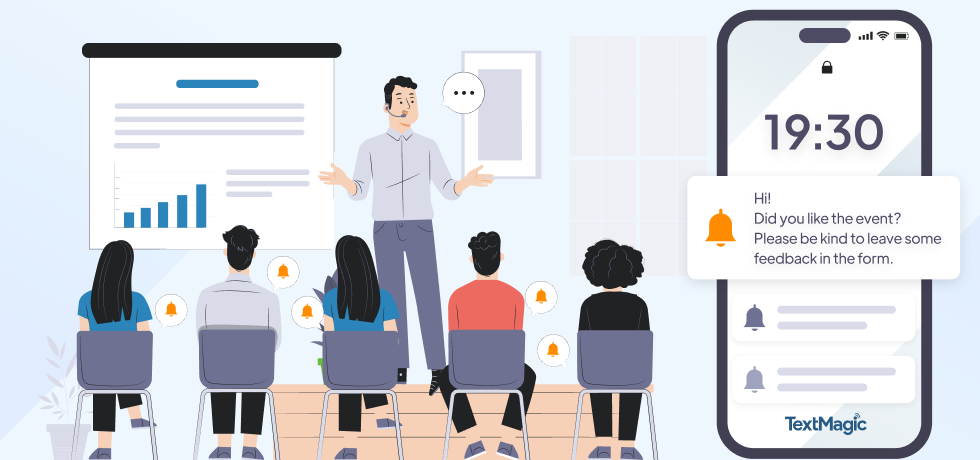
Implementing SMS geofencing in your business
At first glance, geofencing implementation might seem a bit hectic. However, you can easily get the best results with the right strategy. To this effect, here are the steps to implementing an SMS geofence in your business:
-
Choosing the right geofencing software: When choosing a geofencing SMS software for your company, it is always best to check that it can handle your needs.
Always look for reliability, accessibility, and how well they protect customer privacy. It’s also important to compare their prices with your budget to find the best fit. Examples of geofencing SMS software are Eskimi and Airdroid.
-
Setting up geofences and triggers: Once you’ve identified the right geofencing software for your company, you can set up your geofences and triggers.
At this point, you can determine the size and location of your geofences and what customer action would trigger the geofencing SMS campaign. While doing this, choosing locations around your business is best so the clients can easily find you.
-
Crafting effective SMS messages: Now that the geofences and triggers are set up properly, the next step is to create text messages that get the customer’s attention.
To do this, the SMS messages must be engaging, short, and concise so the customer gets the information quickly.
-
Compliance and privacy considerations: The final step to implementing your geofencing strategy is to make provisions for compliance and customer privacy.
In this stage, you set up the system to obtain customer permission to access and use their location. The stage is crucial because you might end up paying fines for infringing on text messaging laws if you don’t consider the customers’ privacy.
Strategies for effective SMS geofencing
Although geofencing is a successful location-based marketing technique, you can only maximize its benefits with good strategies. To help you get the perfect geofencing SMS plan, we will discuss some of these strategies below:
-
Targeting specific locations and audiences: Targeting specific locations can help you tailor your SMS messages to the audience’s preferences.
For instance, a coffee shop near a university can use geofencing to send promotions to students there. It can use SMS geofences to send special offers to the students on their favorite study beverages.
-
Personalization and relevance: Drafting your SMS geofencing campaigns in a personalized manner doesn’t only attract the customer’s attention. It also helps you build an interactive environment where they can express their preferences better.
You must ensure that the campaigns are relevant to the customers. To do this, compare their past preferences and find a pattern. Pairing this with personalized messages, addressing clients by name helps build a connection with them.
-
Timing and frequency of messages: When it comes to SMS geofencing, timing is everything. You can get the customer to take the required action immediately with the right timing.
For example, a retail store could send a welcoming message as a customer enters and a follow-up discount code upon exit. This would encourage the customer to purchase any items they might have dropped because they were on a budget.
-
Incorporating offers and promotions: One of the quickest ways to get customers’ attention is by sending them offers and promotions for your services. And you can do this with an SMS geofence.
Additionally, you can send special deals to clients upon joining your company. This creates a sense of urgency that pushes them to grab the opportunity. Ultimately, it boosts customer loyalty since they’d want to keep accessing these offers.
Best practices and tips
The following are some best practices and tips for applying SMS geofencing to your business:
Opt-in and permission-based marketing
As we’ve stated earlier, SMS geofencing largely depends on permission-based marketing. This practice makes customers feel safe, allowing you to access their location and data.
You can use SMS or pop-ups on your business’s website to request permission to access your customers’ location. While doing this, remember to state how you plan to use their data while they are filling out their details.
Monitoring and analytics
Firstly, when designing your geofencing SMS marketing plan, you must set goals for your business. Once that’s done, you can monitor your progress toward achieving that goal. This way, you can identify practices that work best and use them more often.
A/B Testing and continuous improvement
With the results from your analyses, you can ensure your strategy continuously improves. To do this, compare current strategies with older ones to find which drives you towards your goal quicker. You can also derive new strategies to boost your marketing plan.
Potential challenges and how to overcome them
Now that you know how to implement your geofencing SMS strategy, you should prepare for potential challenges. Below, we will discuss some of these possible challenges and how you can overcome them:
Over-messaging
One of the mistakes businesses make when applying geofencing to their marketing is over-messaging clients. Sending multiple messages to your clients at once doesn’t push them to check out your services.
In fact, it does the exact opposite of attracting customers and doesn’t speak well of your company. So, you must avoid offloading numerous messages onto your customers. Instead, send relevant messages once or twice a day at different periods.
Balancing precision and privacy
It’s easy to sway between trying to gain your customer’s attention and infringing on their privacy. Essentially, drafting the ideal geofencing strategy demands that you strike a balance between delivering concise messages and respecting your client’s privacy.
Keeping up with technological changes
The world of business and technology is constantly involved, and as time goes by, the bond between the two industries will only grow stronger. Staying ahead of advancements such as the integration of VPNs with SMS geofencing is crucial. VPNs enhance the security and privacy of SMS geofencing—a targeted marketing strategy—by encrypting data and overcoming geographical restrictions, enabling businesses to reach a broader audience securely.
As the synergy between technology and business deepens, adopting such innovations is imperative for optimizing marketing strategies and maintaining robust security.
Future trends in SMS geofencing
With the introduction of new technology, such as artificial intelligence (AI), the future of SMS geofencing is very bright. Below, we will go into detail about these trends and their application to marketing in business:
-
Integration with AI and automation: As the world evolves, geofencing SMS technology will only get smarter by integrating with Artificial Intelligence (AI) and automation.
This means clients within your SMS geofence would receive automated messages promoting your brand. They could even communicate with AI chatbots to explore your services and offers.
-
Enhanced personalization and contextual marketing: This approach takes customization to a whole new level, catering to each user’s unique preferences and behaviors. Businesses will send messages that feel custom-made for each recipient, fostering stronger customer relationships and a positive brand image.
As users enter geofenced areas, they can expect messages and offers that align with their immediate needs and interests, making interactions more relevant and meaningful. In essence, SMS geofencing’s future lies in delivering the right message at the right time, elevating the overall customer experience.
Conclusion
To say the least, SMS geofencing stands as a transformative force in modern marketing and engagement strategies. Its ability to deliver timely, location-specific messages to a target audience has reshaped the way businesses connect with customers.
From retail giants enticing nearby shoppers with tailored offers to healthcare providers improving patient engagement, the applications of geofencing are vast and impactful. By harnessing the benefits of location-based technology, organizations can not only boost their outreach and sales but also forge deeper, more meaningful connections with their audiences.
Using SMS marketing with geofencing allows you to effectively meet your target audience and get to know their preferences. So, make sure you take advantage of this opportunity and incorporate SMS geofencing into your marketing strategy.
Frequently Asked Questions (FAQs)
The financial investment required for implementing geofencing technology varies based on the scale of deployment, chosen software solution, and associated features such as analytics, automation, and messaging volume.
For example, Textmagic offers SMS geofencing through a pay-as-you-go model or monthly plans. Rates can be as low as $0.01 per message if you opt for high-volume packages like the 10,000-message Connect plan, which costs $100 per month.
Your iPhone combines GPS, Wi-Fi, and network signals to track your movement within predefined areas. When you move in or out of these zones, your iPhone signals the geofencing system to activate location-triggered responses.
Despite its many benefits, geofencing comes with some drawbacks.
Customers may feel their privacy is compromised if their location data is collected without proper transparency. Additionally, sending too many messages can lead to customer irritation and increased opt-outs.
Geofencing performance is tracked using various analytics, including the number of geofence triggers, click-through rates, and ROI from location-based campaigns. Monitoring unsubscribes or opt-outs is also essential to avoid over-messaging.
Geofencing is permitted under U.S. law as long as companies follow privacy and consent regulations.
Users must be informed and give clear consent before their location data is tracked or used for marketing purposes. Violations of these rules can result in fines or legal action.
Related articles
How to recover deleted text messages: Essential tips and tools
There are plenty of ways to lose an important text f...
Top 10 must-attend customer experience conferences in 2025
Customer experience conferences are remarkable hubs ...
A complete guide to horizontal communication in the workplace
How much time does your team spend in meetings, writ...
What is number porting? Pros, cons, and business considerations
Are you considering switching mobile providers but a...
12+ Appointment confirmation and reminder text templates
Businesses can leverage SMS marketing for sending te...


